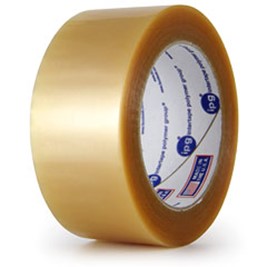Four ways to choose the right carton sealing tape
February 1, 2024
By Intertape Polymer Group, for the Blue Print
By Intertape Polymer Group, for the Blue Print
|
Around 10% of all online orders arrive with damaged packaging or damaged contents. In a world trending toward being more online, making sure everything people buy arrives safely is a very important assurance to give. Are you checking to make sure you secure everything you ship out? Do you know if you are using the right carton sealing tape to do that?
This post will help you understand what the best tape to seal any box is. As you read each entry, think about what you are shipping out and at what scale. It may be time to upgrade how you ensure the safety of your products. What to considerCarton packaging comes in a wide range of shapes and sizes; there are many things you need to consider before you think about specific tapes. The following are some of the most relevant aspects of your shipments you need to think about.

1. Box weight
You need to check how much stress you are likely to put on each box from the sheer mass of the item(s) inside. If you plan to ship out lighter boxes, you can use standard adhesives that secure the item from tampering. When you plan to send heavier items, though, consider tapes with stronger adhesive qualities. You might want to choose durable material options to ensure there is not a point of failure in the tape itself. 2. Storage conditions Understand where your packages will be stored when they are not undergoing shipping. You will want to learn about the extremes of temperature they will stay in, how humid those locations will be, and how often they will move around. Some tapes offer temperature resistance in either hot or cold conditions. Others have much better adhesion in moist conditions, offering a better choice if the weather turns foul. 3. Shipping and handling Look into the distance to travel and the nature of any shipping that occurs. If items will ship further, and pass through more hands, there is a higher chance of facing rough handling. As such, make sure you have damage-resistant tapes in that case. 4. Unique requirements You might need to consider unique traits related to what you are shipping. If you ship hazardous materials or living creatures, for example, you may need printed tapes that communicate the box’s contents. They may also need to meet safety regulations and prevent the contents from spilling. Different carton sealing tape optionsThe four main types of carton sealing tape have advantages and disadvantages. Think about your needs as listed above and choose from these options to match.

Acrylic tape
This is among the more professional-looking types of packaging tape you can pick up. For this reason, you often find it in use as a branding tape to label boxes with what is inside or the seller’s identity. It is also a bit of an “everyman” when it comes to packaging. It offers good adhesion on most surfaces, remaining even after prolonged UV exposure, so long as the surface is not too dusty or humid. It even works well on recycled cardboard and similar materials. Acrylic tape does not work as well on heavyweight boxes or those prone to shifting during transport. As such, make sure to only use it on light- to medium-weight packages to prevent losses. 
Hot melt tape
This is one of the fastest tapes to apply, adhering fast to the surface on which you apply it. It is also one of the strongest tapes when adhering to a surface, although the strength of the tape itself depends on its construction. Hot melt options are great when you need to ship very heavy packages, as they maintain their adhesion even with strong tension. This also helps when trying to secure boxes with too much in them for any reason, or if you expect them to face lengthy or stressful shipping conditions. Hot melt tape is also ideal for custom printing. We would caution you, though, hot melt tape does not work as well as some of the other options when exposed to extreme temperatures. If you plan to ship or store items in the warmth or cold, this wouldn’t be the best choice. 
Natural rubber tape
Natural rubber is, as its name suggests, a little more malleable than many of the other options in this list. If you are packaging a container that does not adhere to standard shapes or sizes, using this tape will help you overcome its irregularities. Natural rubber is also a good choice if you expect the shipment to pass through locations that are either very hot or cold. It can handle such environments without losing adhesion and even works well if the humidity reaches extremes. As such, it works well for chilled goods or a hot manufacturing environment. Another benefit of natural rubber is its ability to adhere to less-clean surfaces. It will hold even when placed on dust or small amounts of dirt, whereas other tapes may fail. 
Water-activated tape
This tape is dry to the touch until water touches it, at which point the dry plant-based adhesive will become “activated.” When applied to its surface, it becomes tacky, thereby forming a firm, tamper-evident seal. As a paper tape, water-activated tape is ideal for printing your company logo, branding message, or QR code. This is the best carton packaging tape when dealing with corrugated boxes or cartons that need to have a solid, secure seal. Water-activated tape literally bonds to the carton; acting as an added layer of package security. It works well in chilly locations, and as such, it will hold up in refrigeration, as well as, hot, humid and dusty environments. The seal will not be compromised, it will endure the elements. Content originally from Intertape Polymer Group. Reused here with permission.
Vertical Divider
|
|


